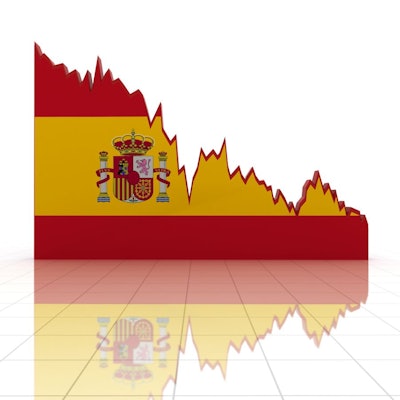
The Spanish poultry industry is in a critical state, according to Jordi Montfort, secretary general of the country’s poultry producers’ association, Avianza which, in late October 2021 was warning that the sector could face losses of more than EUR300 million (US$346.6 million) in 2021.
Spain, the European Union (EU)’s second-largest broiler producer, accounting for approximately 13% of the bloc’s production, is struggling with significant cost increases and, at the same time, suffering as a result of price wars between retailers and imports of low-cost chicken.
Feed costs significantly higher
Between January and August 2021, the cost of a metric ton of chicken feed rose by 26.2% to reach EUR375.37, according to data from the country’s Ministry of Agriculture, Fisheries and Food. The price of turkey feed over the same period rose to EUR362 per metric ton, an increase of 23.4%.
This increase in feed prices was due to high ingredients cost, with corn prices up by more than 20%, wheat up by more than 12% and barley rising by almost 18%. Soy prices were up by 33% over the year, Avianza noted.
At the same time that feed costs were rising, the prices paid to poultry producers fell, with broiler prices down by almost 16.5% and turkey prices down by 16.2%.
Ongoing difficulties
The squeeze on producer margins during 2021 came after a period of lower sales for the Spanish industry. Sales of poultry meat by value were down by 5% in 2020, with the country particularly affected by the loss of hotel and catering demand as a consequence of COVID-19.
COVID-19, however, had a greater impact on Spain’s poultry products than simply a smaller market. Avianza notes that it also resulted in additional costs as the industry had to adapt the supply chain to comply with COVID-19 prevention regulations.
Cost pressures occurred across inputs and, where electricity is concerned, the sector is now having to work with six- or seven-fold increases compared with a year earlier.
The cost of labor has also jumped. Collective agreements with the slaughtering and processing sectors will have seen wage costs increase by more than 5.1% by the end of 2021.
Squeezed margins, imports
Avianza goes on to note that the poultry sector has been among the most affected by the price war being undertaken by retailers. On top of this, it adds that low-cost chicken coming from foreign markets, including from outside the EU, is a threat to Spanish producers. On occasion, it notes, low-cost chicken is being imported that does not comply with EU standards.
Montfort notes: “The increase in raw material prices has put the poultry sector in a critical position and, along with other factors, a sector that is an example of productivity, innovation and quality, and that generates thousands of jobs, is being weakened. The data from the Ministry of Agriculture is only the tip of the iceberg.”


















